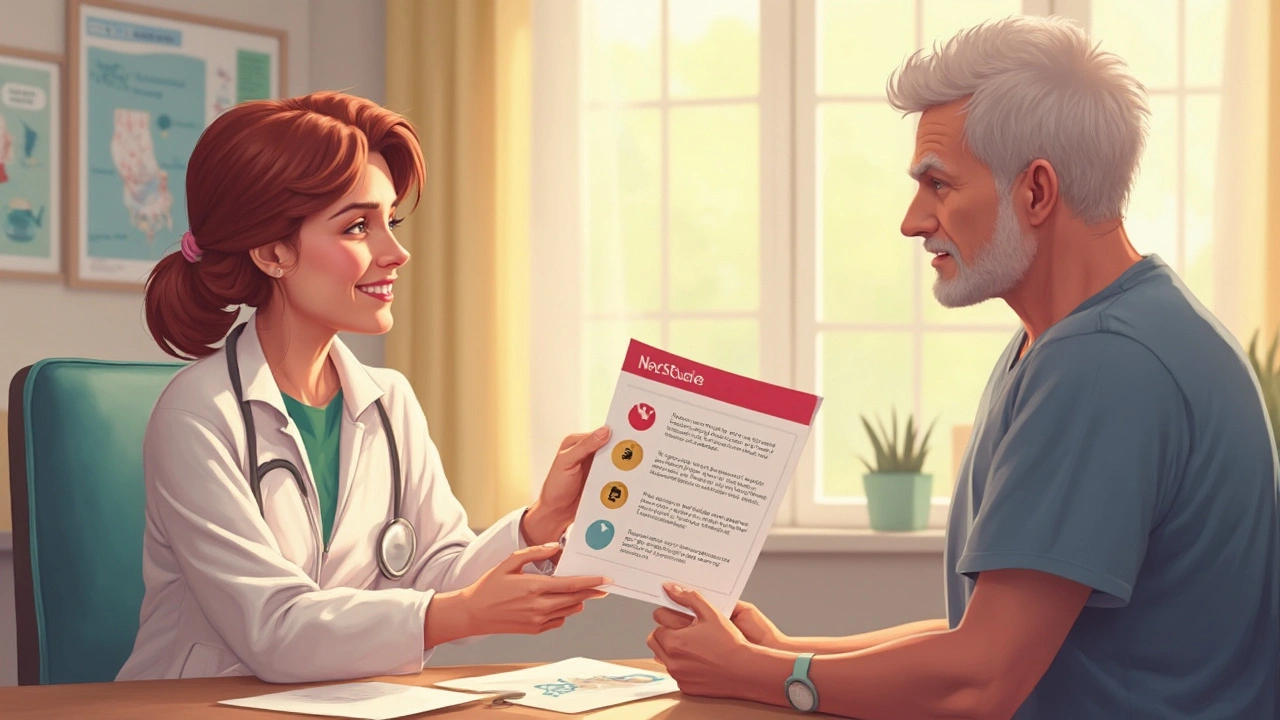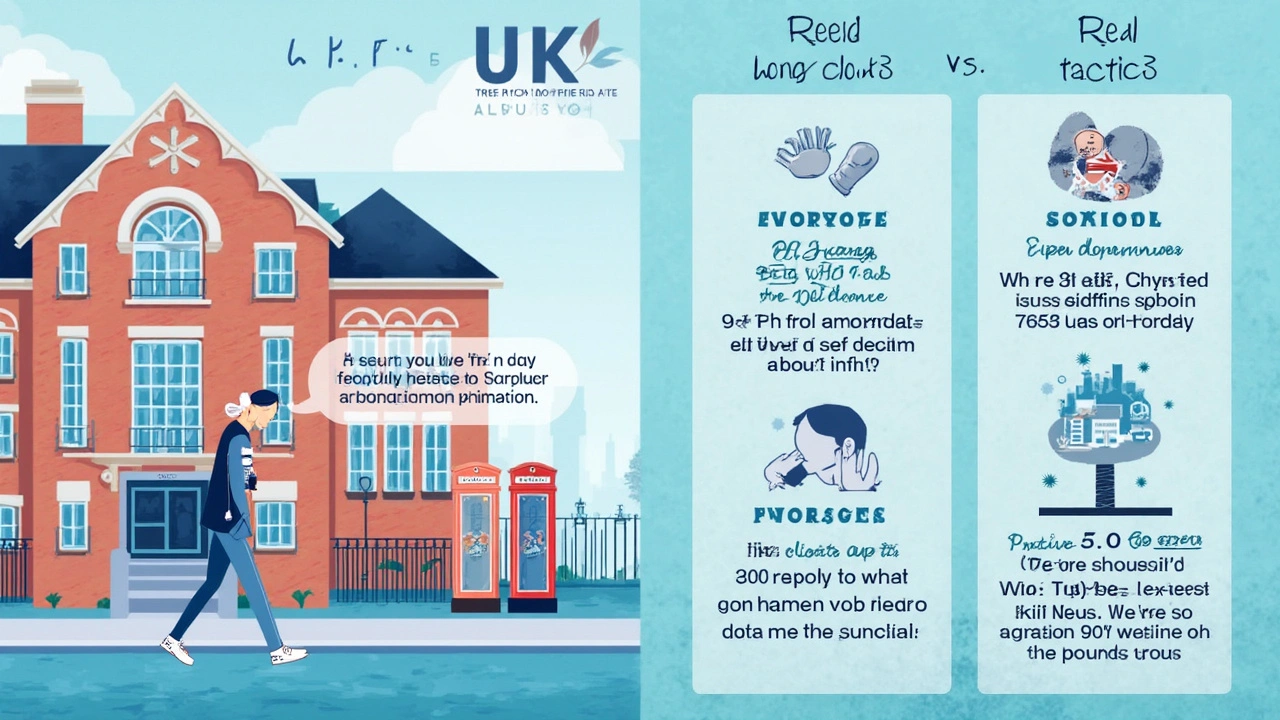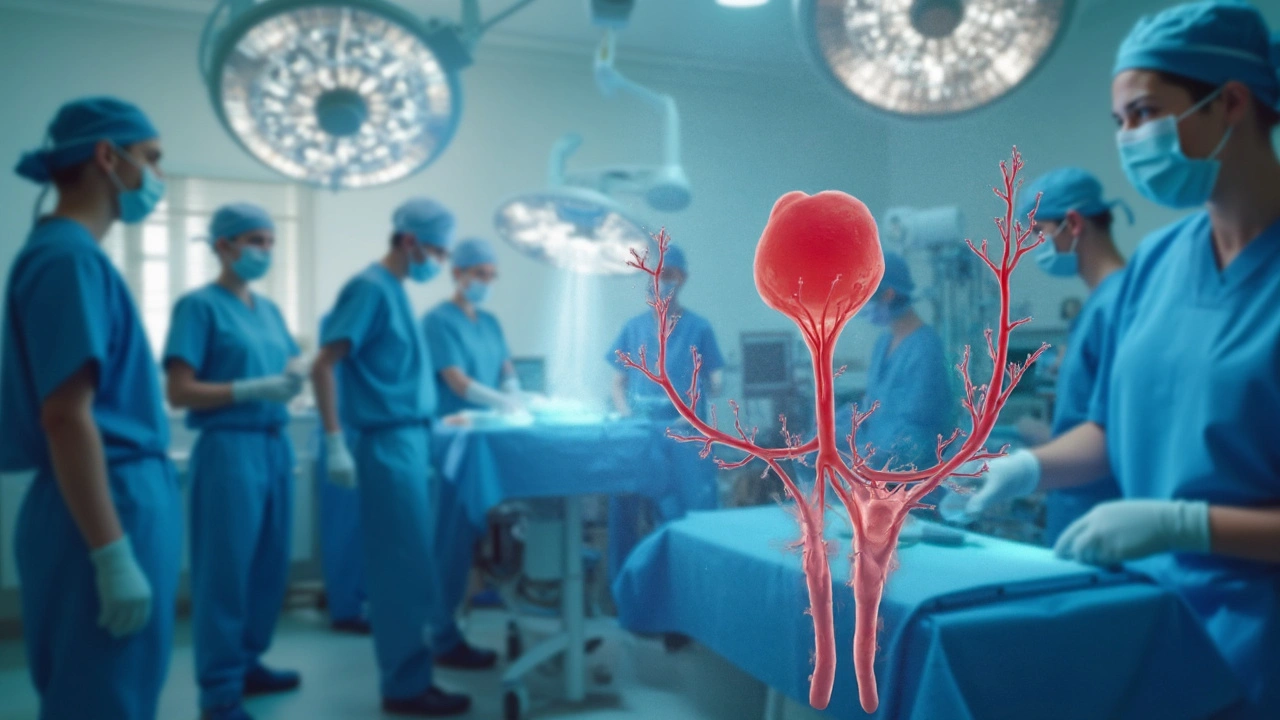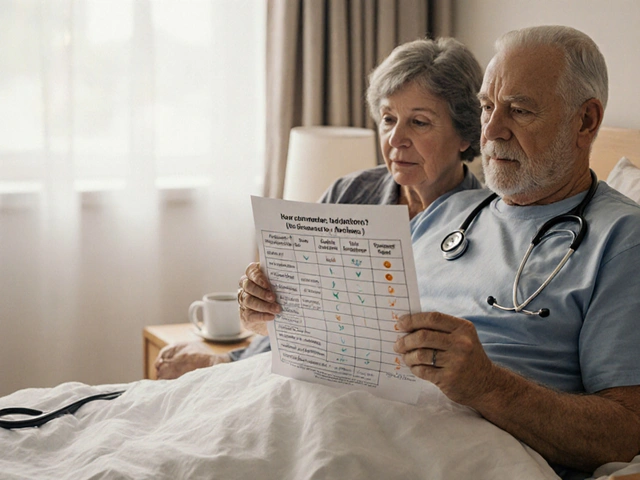Where Does the Blood Clot Myth Come From?
There's this persistent rumor floating around hospital corridors, family WhatsApp chats, and anxious pre-op conversations: anesthesia causes blood clots. It's the kind of idea that has a certain stickiness, especially if you've heard horror stories about post-surgery complications. Funny thing is, this isn't coming from nowhere—every surgery comes with a small risk of blood clots, which are properly called venous thromboembolisms (VTEs). But is it the anesthesia that’s at fault? Spoiler alert: it’s not that simple. The roots of this myth seem to grow out of association, not causation. When something goes wrong after surgery, we tend to pin the blame on the most dramatic part of the experience. Going under is undeniably dramatic. But anesthetic drugs themselves aren’t quietly plotting to clump your blood together during your nap.
Think about what actually happens after you’re wheeled into the theater. You get anesthetic, your body relaxes, and you stay very still—sometimes for hours. Once the operation is done, you may be lying in bed for quite a while at hospital, drowsy and definitely not up and running. This stillness is the real culprit; when veins don’t get squeezed by moving muscles, blood flow slows. Slow blood flow is fertile ground for clots. Add in any inflammation after cutting and stitching, and your body's normal reaction to injury makes clotting even more likely. But here’s the key detail: it’s prolonged immobility, combined with your body’s repair process, that's packing the punch.
Let’s look closer. Anesthetics—whether given by gas or needle—don’t change clotting factors like hormones or certain medications do. They don’t tell your liver to make sticky proteins, and they aren’t driving up your platelets behind the scenes. That’s been proven by multiple studies, including a huge NHS audit in the UK that tracked VTE rates after thousands of surgeries. The difference in clot rates didn’t hinge on the type of anesthesia used, but on how long patients stayed immobile, how invasive the surgery was, and whether other factors—like obesity, smoking, or hormone use—came into play.
Still, the story gets muddled when someone has a clot after an operation. Grief, confusion, and blame mix together. But medical teams rarely chalk up a clot to anesthesia. Instead, they look at the big picture: Was the patient moving soon after surgery? Were blood thinners or special socks used? Was there a family history of clotting disorders? People who get spinal or epidural anesthesia, which lets them stay awake and mobile sooner, might even be at lower risk of blood clots than those who have general anesthesia and need longer recovery time.
If you're scrolling social media or medical forums at 2am, bracing for a routine procedure and worried stiff about these risks, relax a bit. Your anesthesiologist isn’t your enemy. Instead, focus on the other stuff in your medical history—have you had a clot before? Do you have varicose veins or are you taking hormone pills? Those things matter much more for your actual risk.

Why Surgery and Not Anesthetics Are the Real Clot Risk Factors
The mechanics of a blood clot are suspiciously simple. Stick yourself on a cross-country flight and park your legs in a cramped seat for hours—you’ll have a tiny increased risk of deep vein thrombosis (DVT), a kind of clot. Same idea plays out in hospital beds. Anything that keeps your legs still for a long stretch—trauma, injury, or even the “paralysis” caused by anesthetic drugs during surgery—slows blood flow. And surgery cranks this risk up a notch because tissue trauma causes your body to go into repair mode, upping your blood’s natural stickiness to stop bleeding.
Let's get technical for a sec. During most operations, you’re lying still for ages and perhaps strapped in, especially with joint or abdominal surgeries. Once the incision is made, your body starts pumping out clotting agents to try to mend the damage. The longer the cut is open and you’re not moving, the higher your risk for clots forming in your legs or pelvis. Here’s where the confusion sets in: general anesthesia puts you to sleep and can make recovery slower—so some people stay in bed longer, and that’s where extra risk seeps in.
But the anesthetic drugs used, whether propofol, sevoflurane, or regional blocks like spinal or epidural, haven’t been shown to trigger blood clots in people with no other risk factors. If anything, epidurals get you moving sooner because they block pain, speeding up your walk to the hospital corridor. This is one reason orthopedic teams try to use regional anesthesia for hip and knee replacements. Less pain, faster movement, fewer clots—that’s the logic.
To illustrate this, here's a quick look at observed hospital stats following common surgeries:
| Surgery Type | Average Clot Incidence (%) | Anesthesia Type Linked |
|---|---|---|
| Hip/knee replacement | 1-2 | General, Regional (either) |
| Major abdominal | 0.5 | Usually General |
| Minor day surgeries | <0.1 | General/Local/Regional |
Notice the numbers stay low, and aren't tied to anesthesia type. Hospitals in the UK and beyond are so aware of this problem, they now use scoring systems to judge a patient’s risk before surgery ever starts. It could be a simple as asking, 'Did you have a clot before? What’s your BMI? Do you smoke?' These questions do more to predict risk than what goes in your IV drip.
A big insight from the last decade: prevention works. Mechanical leg pumps, quick walks within hours after surgery, and injecting low doses of heparin (a blood thinner) all lower that risk further. When I had my son Leander by caesarean section in Bristol, I remember the relentless cheerfulness of the nurses urging me to “swing my legs over the bed and have a little stroll,” even when I wanted to do nothing but nap. Annoying at the time, yes, but they were actively preventing blood clots—not because of the spinal block I’d had, but because lying still is what’s dangerous.

What You Can Actually Do to Prevent Blood Clots After Surgery
This is the part nobody tells you straight: you have more control over your clot risk than you think. You don’t need to be a passive patient. Want some science-backed tips? Here we go:
- Move as soon and as much as you can: If your doctor gives the all-clear, get out of bed. Even small movements like wiggling your toes, flexing your ankles, or gentle marching in place boosts blood flow.
- Use those weird white compression socks: They look silly, but they cut the risk of DVT by squeezing your calves, helping blood speed back to your heart.
- Stay hydrated: Dehydration thickens your blood. Water isn’t just for the hangover brigade; it could help prevent a clot.
- Follow your medication plan: If your doctor says to take blood thinners or wear leg pumps, don’t skip them. The protocols are there for a reason.
- Ask your doctor about your clot risk score: This personalizes your plan. If you have a history of clots, are elderly, overweight, or are taking hormone treatments, the team may adjust your medications or use extra precautions.
Don’t ignore new pain or swelling in your leg, sudden shortness of breath, or chest pain in the days after an operation. These could be signs of a blood clot and need checking, pronto. Prevention isn’t just a medical word—it’s you nudging your hospital bed down the hall, gulping an extra glass of water, or wearing those pressure stockings till you can barely stand them. Tiny, uncomfortable choices with a big payoff.
If you’re deep in a research rabbit hole right now, the myth-busting answer is right here: does anesthesia cause blood clots? Not directly. The drugs themselves aren’t your enemy—it’s the side effects of long idle time and healing tissues. If there’s anything to focus on, it’s those post-op walks, compression gear, and honest conversations with your medical team.
I know, all this talk about surgery makes the whole experience seem pretty clinical, but there’s one other thing worth saying. Life after an operation shouldn’t be a series of checklists and fears. Get up, move, drink, ask questions. That feeling of control? It helps recovery too—maybe even more so than the anesthesia ever did.







Pooja Arya
30 April 2025When we assign blame to anesthesia, we’re really chasing shadows of fear that hide deeper truths. The drama of the operating room makes it easy to turn a neutral drug into a villain, but the real antagonist is the stillness that follows. Immobility, not the anesthetic, creates the perfect storm for clot formation. We love stories where the obvious culprit gets the spotlight, yet science shows it’s the postoperative period that matters. Think of the body as a river; if the water stops flowing, sediment settles and clots appear. The moral? We should focus on movement, not mystify the medication.
Sam Franza
30 April 2025Great point about movement being key. Getting up early and doing toe wiggles can keep blood flowing. Also, compression socks are simple tools that work well. Stay hydrated and follow the doctor’s plan for meds. This approach helps everyone feel safer after surgery.
Raja Asif
30 April 2025Listen, the idea that foreign medicines are a plot against us is pure nonsense. Our own sedentary habits after surgery are the real danger, and no amount of conspiracy theory changes that. The data is clear: patients who stay still are the ones who get clots, not the anesthetic. If you want to protect your country’s health, push for early mobilization protocols, not anti‑anesthetic propaganda.
Matthew Tedder
30 April 2025I hear you, and I agree that moving early is vital. From my experience coaching patients, a short walk in the hallway can make a huge difference in circulation. Encouraging staff to set gentle reminders helps patients feel supported without feeling rushed. Let’s keep the conversation focused on practical steps that improve outcomes for everyone.
Cynthia Sanford
30 April 2025Keep moving and stay hydrated.
Yassin Hammachi
30 April 2025The interplay between surgery, anesthesia, and clot risk is a nuanced tapestry that invites us to look beyond surface narratives. Firstly, the body's hemostatic system is activated by tissue injury, releasing factors that promote clotting to prevent hemorrhage. This physiological response is independent of the anesthetic agents themselves, which primarily act on neural pathways to induce unconsciousness. Secondly, the duration of immobility post‑procedure directly influences venous stasis, a cornerstone of Virchow’s triad. When patients remain supine for extended periods, especially after major orthopedic or abdominal operations, the calf muscle pump’s function diminishes, allowing blood to pool and form thrombi. Thirdly, modern peri‑operative protocols incorporate mechanical prophylaxis, such as intermittent pneumatic compression devices, and pharmacologic measures like low‑dose heparin, which have demonstrable efficacy in reducing venous thromboembolism rates. Fourth, regional anesthesia techniques, such as spinal or epidural blocks, often facilitate earlier ambulation by providing effective analgesia without the grogginess associated with general anesthesia. This early mobilization can offset the immobility risk, which is why many enhanced recovery pathways favor regional approaches for joint replacements. Fifth, patient‑specific factors-age, obesity, smoking status, hormonal therapy, and personal or family history of clotting disorders-must be integrated into a risk stratification model to tailor prophylaxis. Ignoring these variables in favor of blaming the anesthetic overlooks the personalized nature of clot prevention. Sixth, education plays a pivotal role; patients who understand the importance of ankle pumps, leg exercises, and hydration are more likely to comply with post‑operative instructions. Finally, continued research and audit data reinforce that anesthesia type alone does not significantly alter clot incidence when comprehensive preventive strategies are applied. In sum, the real battle against postoperative clots lies in minimizing immobility, applying evidence‑based prophylaxis, and addressing individual risk factors, rather than attributing causality to the anesthetic agents themselves.